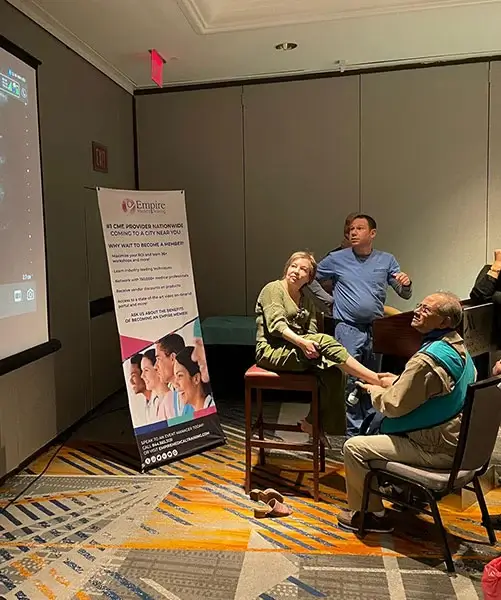Choosing the Right Physical Therapy Course
By Dr. Stephen Cosentino
PRESIDENT OF EMPIRE MEDICAL TRAINING
Physical and occupational therapy is one of the fastest-growing careers in any industry, let alone healthcare. Total physical and occupational therapy jobs are projected to grow by 34% over the next 10 years, according to the Bureau of Labor Statistics.
Becoming a physical therapist takes several years; licensed physical therapists must have degrees from accredited colleges or universities. But physicians and other board-certified clinicians can add physical therapy programs to existing clinical practices without hiring licensed therapists. They and trained support staff can perform a wide range of PT services after completing an accredited physical therapy training course.
It’s important to choose the right course, however. See why it’s important to enroll in a comprehensive PT course and what to look for in the program you choose.
Why Enroll in a Physical Therapy Course?
If you’re still on the fence about adding PT to your practice, consider the benefits:
- Many of your patients likely already present with common medical complaints that can be addressed by PT, such as lower back pain.
- Many states require PT practitioners to complete continuing education courses.
- PT coursework gets you and your staff up to speed on the latest evidence-based practice in PT.
- Adding PT to your practice may increase revenue and draw in new clients.
- PT expertise may open up additional service areas, such as home health services.
Physical Therapy Course Objectives — What Should a PT Course Cover?
The best physical therapy courses are comprehensive. They provide detailed instruction in the medical dimensions of physical therapy as well as the business considerations necessary to make PT a successful part of your practice:
- Indications and contraindications for physical therapy
- Evaluating pain severity and symptoms
- Screening patients for functional deficits and other pre-treatment considerations
- Treatment planning for PT patients
- Overview into specific PT techniques and practices
- Medical coding scenarios for PT services, with all relevant medical codes covered
- Equipment and supplies necessary for comprehensive PT (and when to order them)
- Claim submission and management
- Other strategies to increase reimbursement percentage and limit overutilization of PT services
- Marketing and business development strategies for new PT practices
How to Choose the Right Physical Therapy Course
When evaluating physical therapy courses, consider the following:
- The medical education provider’s accreditation status
- Whether the course qualifies for continuing medical education credits (and the type of credits conferred)
- The specific course objectives as stated by the medical education provider
- The expertise of those teaching the course — PT courses should always be taught by licensed physical therapists or board-certified medical providers that offer PT in practice
- The course format — online, in-person, or both
- Whether the course includes hands-on instruction in physical therapy techniques
- Topics and techniques covered by the course and how they align with what you want to learn
- Whether the course has a business dimension (which is critical for those in private practice) or focuses only on PT techniques
Whether the provider offers more advanced courses in topics adjacent to physical therapy, like training in advanced ultrasound for musculoskeletal injections


